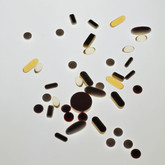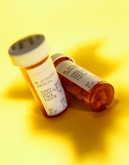Biosimilars/News
Biosimilars user fees as high as brand-name fees
On 9 May 2011, the FDA proposed a user fee programme that would see drugmakers seeking approval to market biosimilars in the US initially paying fees similar to those required of originator biological drug developers.
Teva grabs biopharmaceutical company Cephalon
On 2 May 2011, Teva and Cephalon announced that they had unanimously approved a definitive agreement under which Teva will acquire all outstanding shares of Cephalon for US$81.50 per share in cash, or a total enterprise value of approximately US$6.8 billion.
Generics manufacturers and biosimilars
According to a report by the Wall Street Journal on 31 January 2011, generic manufacturers are expecting biosimilars to be the next cash cow, with sums in the multibillions of dollars expected to be reaped from this market in the near future.
Everybody jumping on the biosimilars bandwagon
According to a report by Reuters on 13 January 2011, Big Pharma is taking a major interest in the biosimilars market. During interviews with Amgen, Merck, and Biogen Idec at the JP Morgan’s 28th Annual Healthcare Conference in San Francisco, USA, biosimilars was the hot topic.
Boehringer Ingelheim acquires Amgen biotech site
Boehringer Ingelheim, one of the world’s leading companies for contract development and manufacturing of biopharmaceuticals, announced on 25 March 2011 that it had formally acquired Amgen’s biopharmaceutical development and manufacturing facility in Fremont, California, USA.
Further lobbying over biosimilars
Brand-name drug companies are trying to weaken a provision of the US Patient Protection and Affordable Care Act that was designed to open up generic competition in biotechnology medicines and save billions of dollars. The industry, patients and providers are watching closely to see how the FDA will interpret the law, in documents that are expected to be released during late 2011.
Merck and Parexel form strategic alliance for biosimilars
Merck Sharp and Dohme (MSD – known in the US and Canada as Merck) and Parexel, a leading global biopharmaceutical services provider, announced on 12 January 2011 that they have entered into an alliance by which Parexel will provide a broad range of clinical development services for designated biosimilar candidates to Merck BioVentures. Merck BioVentures is a division of MSD that focuses on biosimilars.
Samsung to enter biosimilars market
Everybody is jumping on the biosimilars bandwagon these days, and it seems it is not just limited to pharmaceutical companies. Contract research organisation, Quintiles, announced on 28 February 2011 that it has entered into a deal with electronics giant Samsung to provide biologicals manufacturing and biosimilar development.
Spectrum to develop biosimilar monoclonal antibody
California-based Spectrum Laboratories announced on 5 January 2011 that it has signed an agreement with contract research organisation Viropro for the development of a biosimilar version of Roche’s blood-cancer drug Rituxan (rituximab).
Biosimilars boost for South Korea
The South Korean Government has pledged to promote the biosimilars industry and plans to invest in the biosimilars industry in order to make Korea a market leader. The government will provide both financial and institutional support and is aiming to take a 22% share of the global market by 2020.













